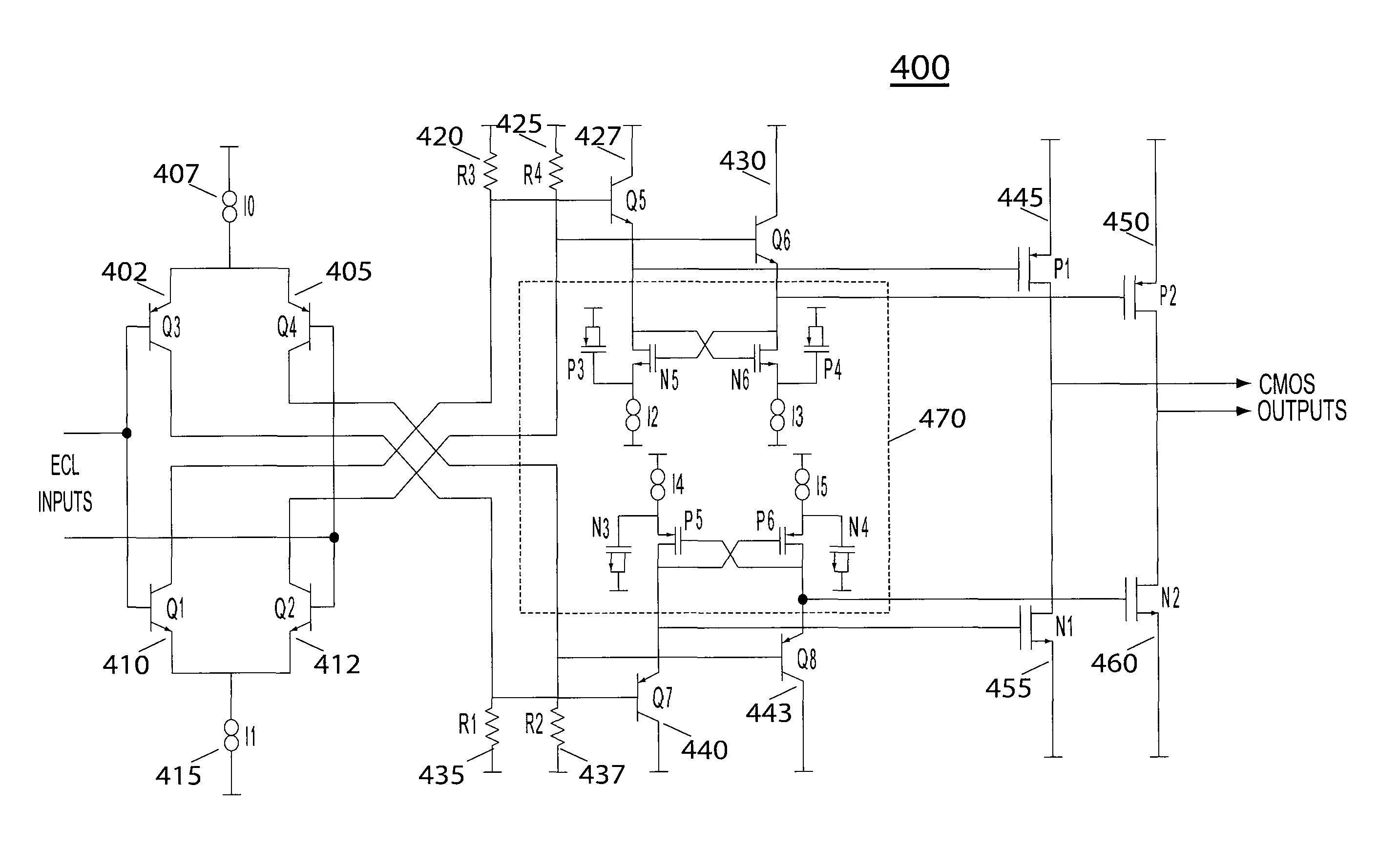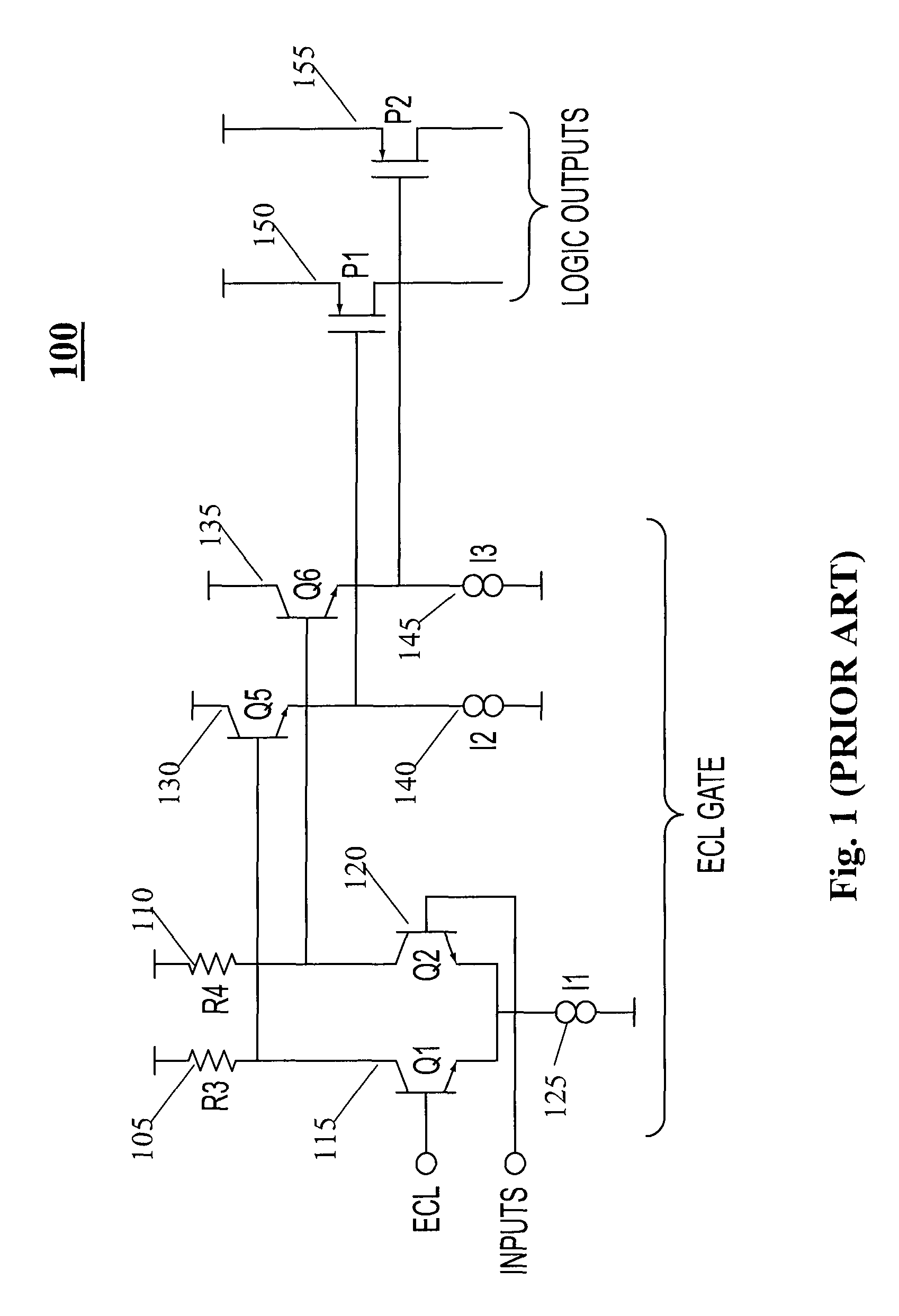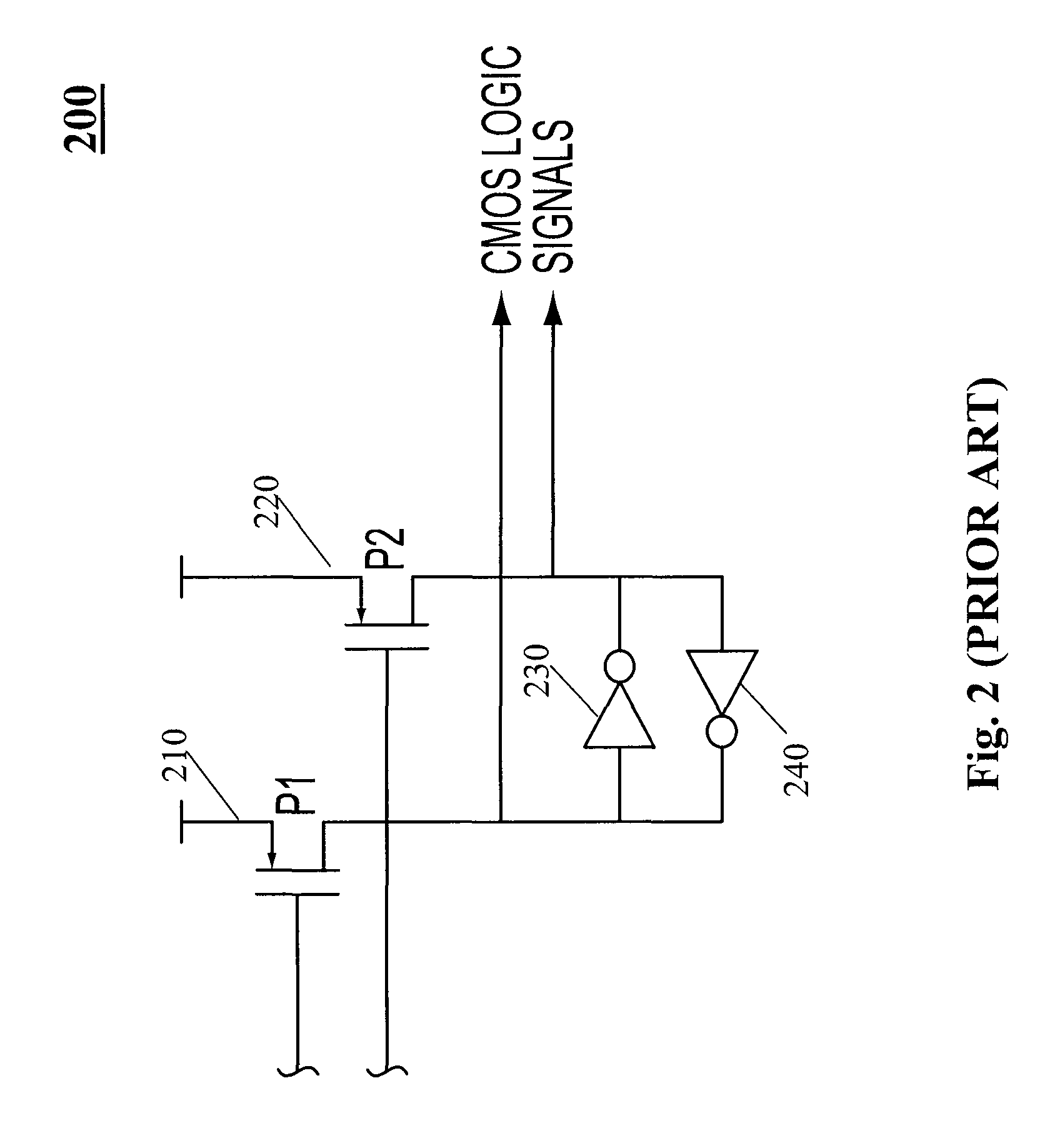Method and system for improved phase noise in a BiCMOS clock driver
a clock driver and phase noise technology, applied in the field of clock driver methods and systems, can solve problems such as limited speed, large errors, poor phase noise,
- Summary
- Abstract
- Description
- Claims
- Application Information
AI Technical Summary
Benefits of technology
Problems solved by technology
Method used
Image
Examples
Embodiment Construction
[0033]The present teaching relates to clock driver circuitry in general. More specifically, the present teaching relates to a BiCMOS clock driver circuitry to improve the phase noise performance of the clock driver.
[0034]The present teaching discloses a circuit suitable for use as a clock driver with reduced phase noise compared with each of the above prior art circuits. The improvement is achieved at the interface between the Bipolar (ECL) section and the CMOS section by actively driving the first MOSFET gates both up and down. In some embodiments, one direction is driven by a BJT emitter follower, while the other direction is driven by using a MOSFET switch to shuffle charge stored on a dummy MOSFET gate. It is understood that other embodiments are also possible in accordance with the scope as recited in the claims.
[0035]FIG. 4 shows an exemplary embodiment of a fully differential and complementary circuit 400 for driving a set of MOSFET gate terminals from conventional ECL logic,...
PUM
 Login to View More
Login to View More Abstract
Description
Claims
Application Information
 Login to View More
Login to View More - R&D
- Intellectual Property
- Life Sciences
- Materials
- Tech Scout
- Unparalleled Data Quality
- Higher Quality Content
- 60% Fewer Hallucinations
Browse by: Latest US Patents, China's latest patents, Technical Efficacy Thesaurus, Application Domain, Technology Topic, Popular Technical Reports.
© 2025 PatSnap. All rights reserved.Legal|Privacy policy|Modern Slavery Act Transparency Statement|Sitemap|About US| Contact US: help@patsnap.com



